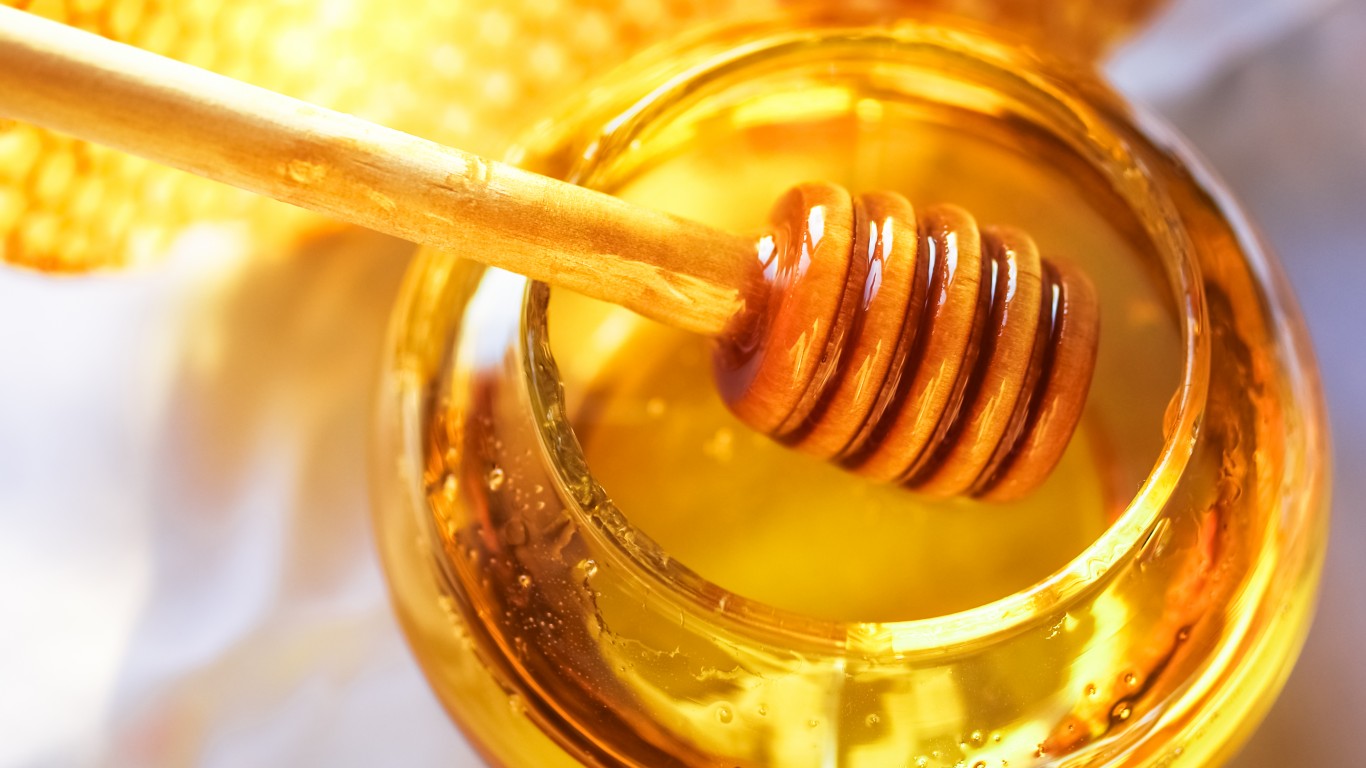
There’s a tendency to divide food into two groups: good-for-you (fruits and vegetables, whole grains, seafood) and bad-for-you (we’re looking at you, pizza). But then there are the foods that are really bad for you – not just because they’re high in calories or sodium or otherwise unhealthy but because they could possibly make you seriously ill, or even kill you.
To compile a list of foods you didn’t know could make you sick (or kill you), 24/7 Tempo reviewed articles on the subject from websites of The World Health Organization, The Canadian Institute of Food Safety, The University of Melbourne Scientific Scribbles, CNN, The Atlantic, WebMD, The Daily Meal, Delish, and Men’s Journal.
Most of the items on our list can be consumed safely if they’re properly prepared or you eat the right parts of them. In many cases, you’d have to eat huge quantities to experience any ill effects. Others might be more problematic, but are so obscure that only the most adventurous epicures would be apt to try a bite – for instance Iceland’s beloved hákarl, or fermented shark. (These are nine vegetables you should never eat raw.)
Perhaps the most fearsome food listed here is fugu, or blowfish, regarded as a great delicacy at sushi bars. Its organs are so poisonous that only expertly trained chefs can prepare it for consumption. And as its name suggests, the death-cap mushroom is pretty lethal, too.
Some foods are dangerous because they’re particularly susceptible to bacteria that cause food poisoning – chicken being the most salient example. (These restaurant foods are most likely to cause food poisoning.)
Click here to read about 25 foods that can make you sick – or kill you
Danger can also come from texture, rather than toxic substances. Hot dogs are well-known as a choking hazard; the denseness of peanut butter can cut off a young child’s airway; the jagged edges of bay leaves can perforate the digestive tract.
Don’t fear these foods, however. Just be careful how you eat them.
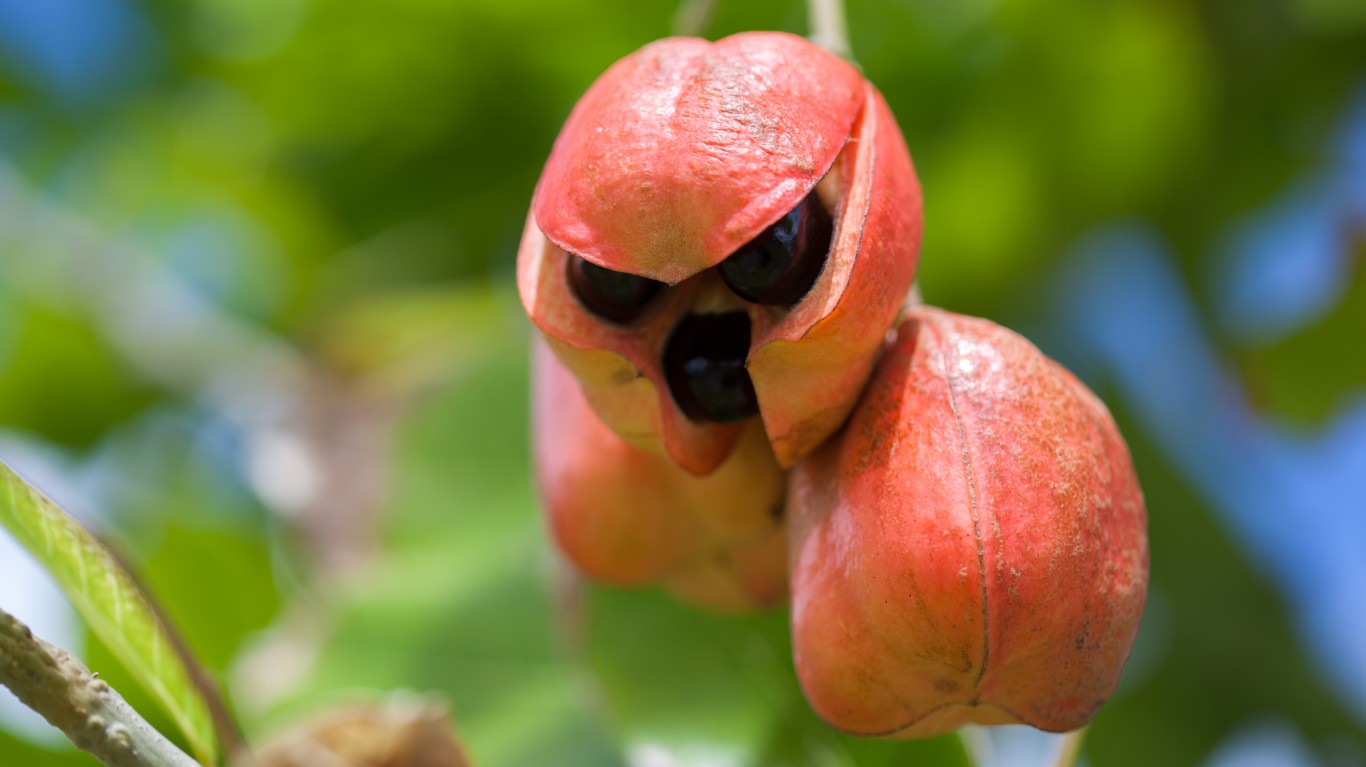
Ackee
> Principal danger: Hypoglycin alkaloid toxins
Native to tropical West Africa, ackee was brought to Jamaica – where it is now considered the national fruit – by Captain William Bligh of “Mutiny on the Bounty” fame (its scientific name is Blighia sapida). When fully ripened and cooked properly, ackee is safe to eat – but the unripe fruit contains poisonous hypoglycin, which can cause convulsions and even death. Even if it’s cooked, unripe ackee can be deadly — as can the water it’s cooked in.
[in-text-ad]
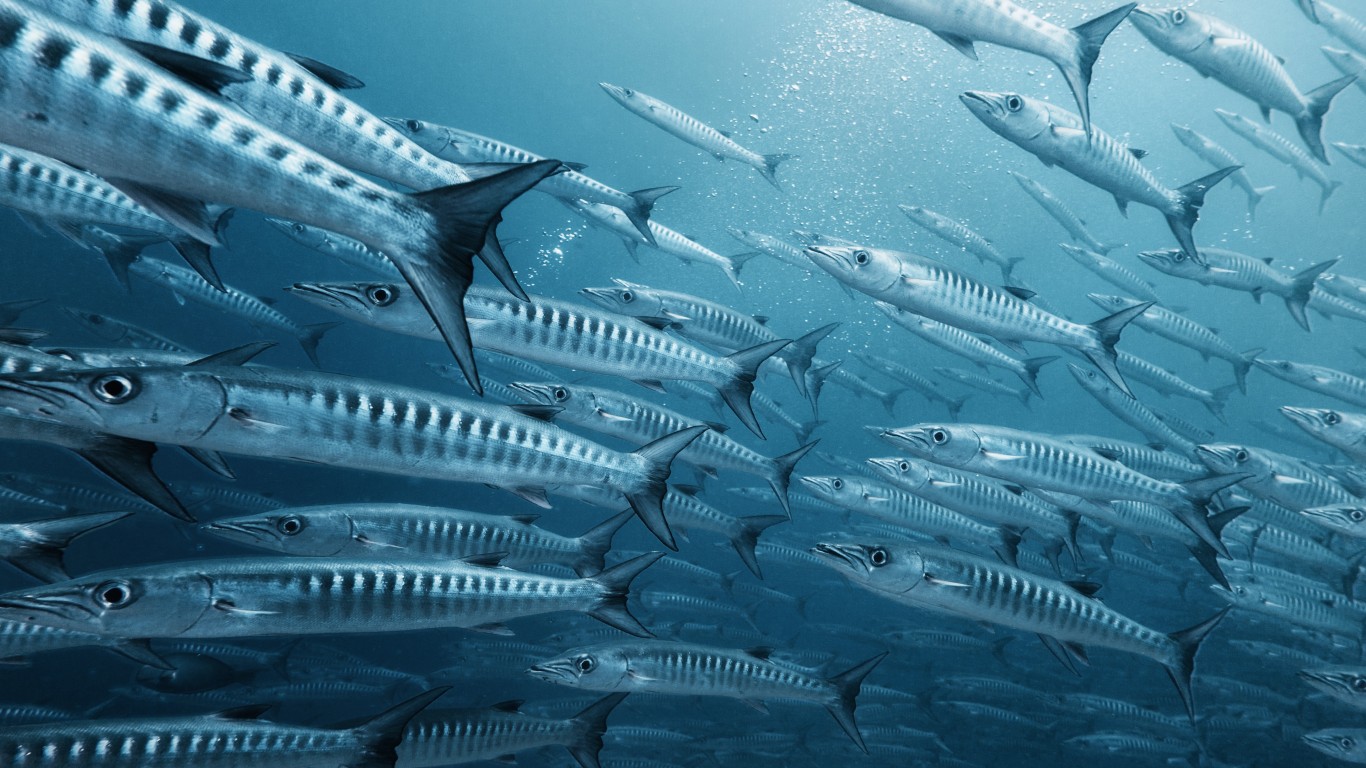
Barracuda
> Principal danger: Ciguatoxin
Yes, you can eat a barracuda – that is, if it doesn’t eat your first. In Florida, barracuda is a popular fish to catch and eat. Just be sure to cook up only the smaller fish; any one more than about three-and-a-half feet in length may contain a concentration of ciguatoxin, which can cause a wide variety of symptoms including numbness and nausea and can affect heart rhythm and body temperature.
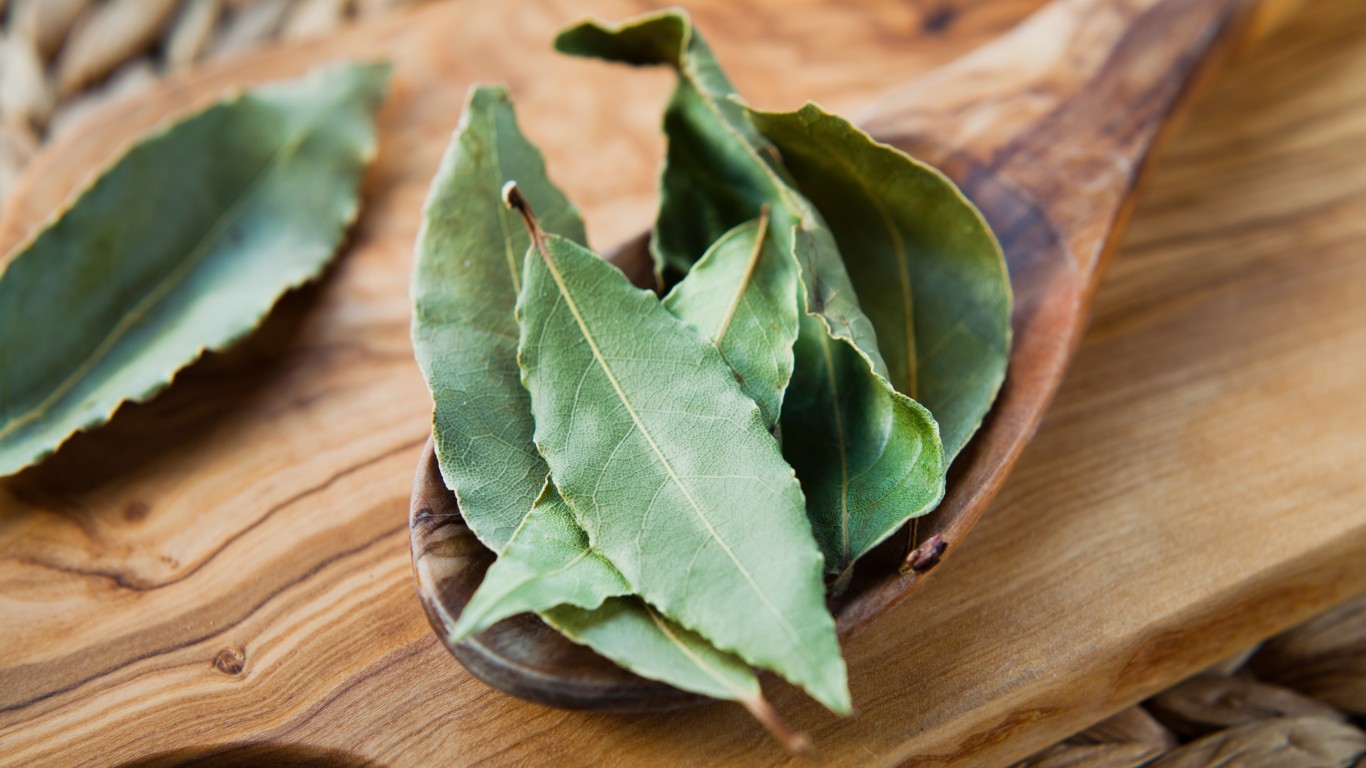
Bay leaves
> Principal danger: Sharp edges
Even watch cooking shows and wonder why the chef always takes the bay leaves out of the sauce or soup before serving? Although the essential oils in bay leaves add flavor and aren’t toxic to humans, their jagged edges that make them harmful to swallow.
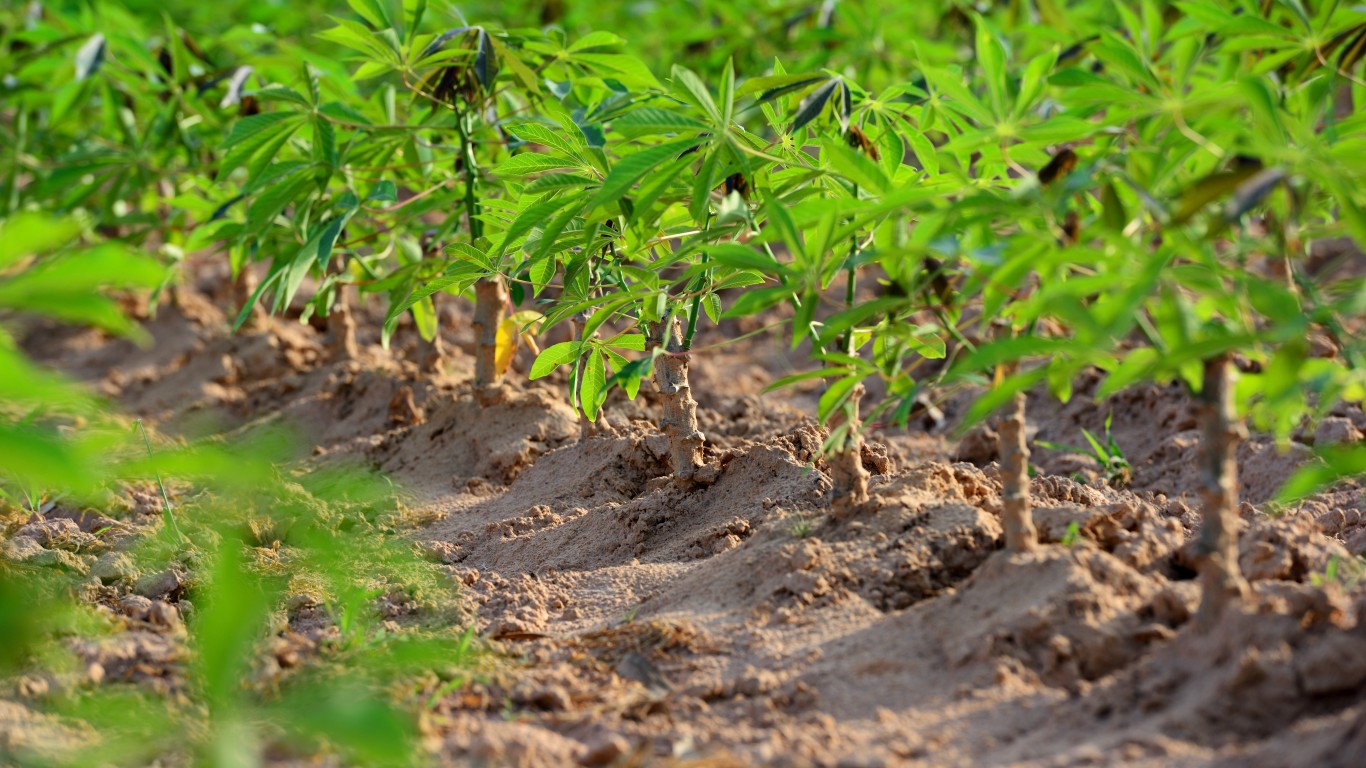
Cassava
> Principal danger: Cyanogenic glucosides, releasing hydrogen cyanide
An edible tuberous root, cassava is typically ground into flour. However, because it contains cyanogenic glucosides, cassava must be detoxified by soaking, drying, and scraping before being eaten to prevent potentially fatal cyanide poisoning.
[in-text-ad-2]
Casu marzu
> Principal danger: Live maggots
Everybody loves cheese, right? But casu marzu may not be to everyone’s taste, except in Sardinia, where the locals love this cheese – once tagged the “world’s most dangerous” because it’s filled with live maggots, which digest the milk proteins turning the cheese creamy and soft. Unfortunately, ingesting any of the maggots could result in myiasis, tiny holes in the intestine caused by maggot bites..
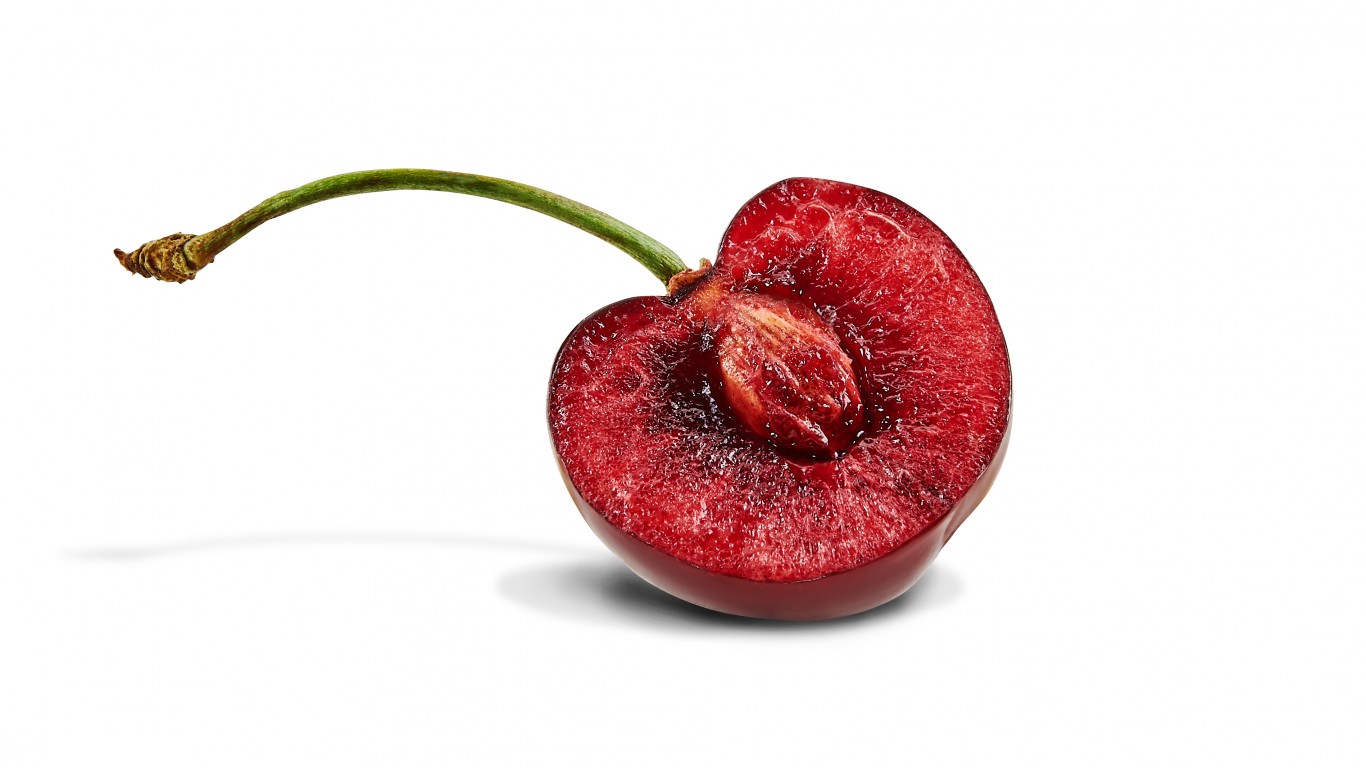
Cherry pits
> Principal danger: Hydrogen cyanide
It’s not the sweet flesh of the cherry that’s dangerous; it’s the hard pit that contains cyanide (also known as prussic acid). But don’t worry if you swallow a whole pit. The pit will pass through your digestive system harmlessly. On the other hand, don’t swallow broken up bits of the cherry pit; the cyanide can lead to unconsciousness and death.
[in-text-ad]
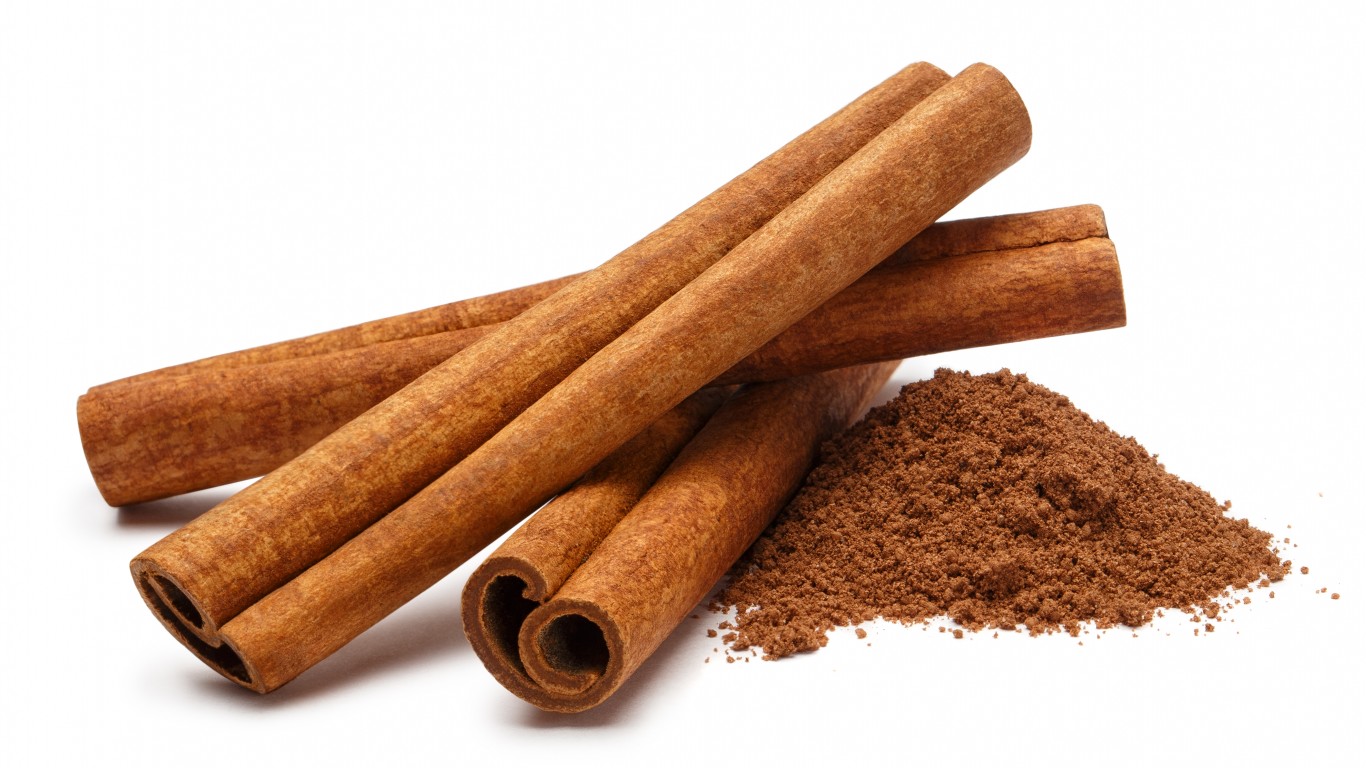
Cinnamon
> Principal danger: Choking hazard, scarring of lungs
One of the four types of cinnamon, the dark-colored cassia cinnamon is the one you’re most likely to buy in the U.S. Consuming large quantities of cassia cinnamon may be toxic if you have liver problems because some cinnamon products contain coumarin, a common ingredient in rat poison. The faddish “cinnamon challenge” that first became popular in the early years of this century – it involves eating a spoonful of ground cinnamon in less than a minute without washing it down – poses another problem: The powdered spice can cause choking or vomiting and damage the esophagus or lungs.
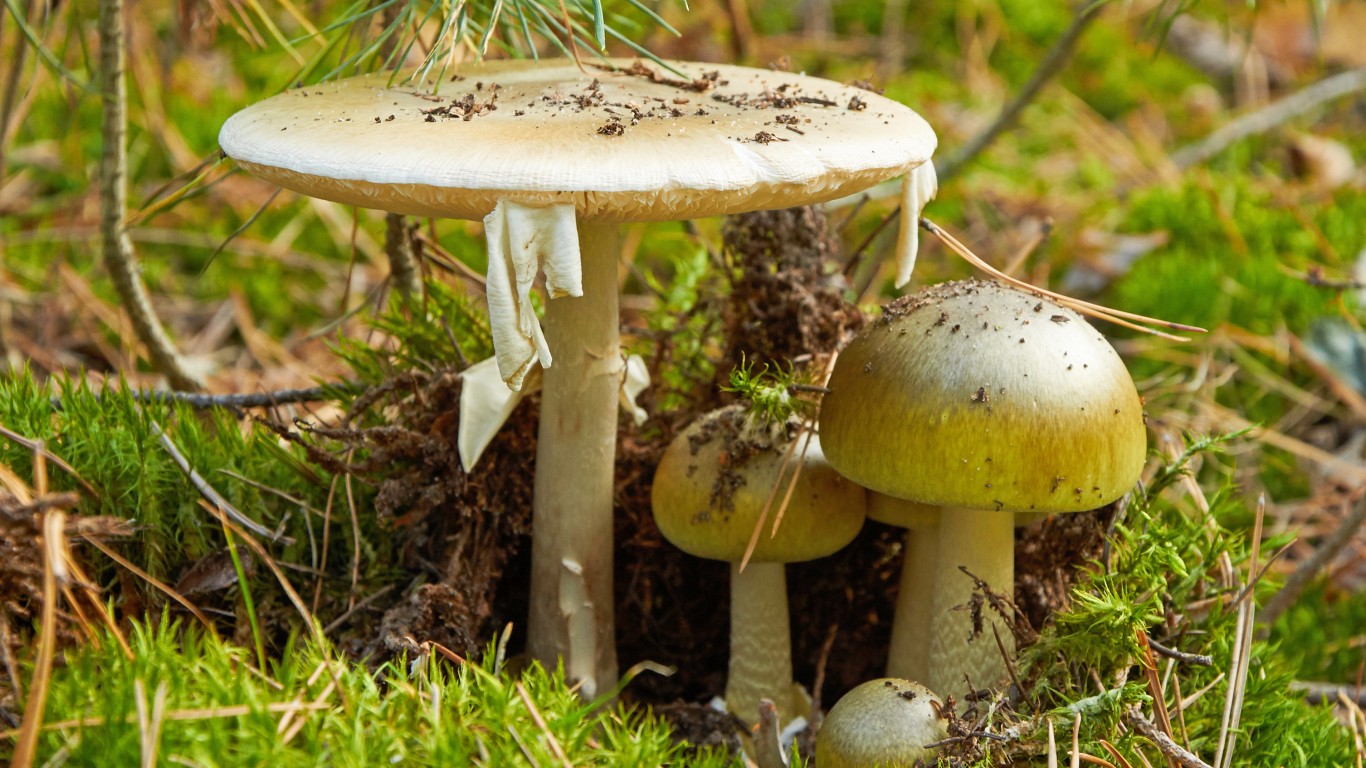
Death-cap mushrooms (Amanita phalloides)
> Principal danger: Amatoxins, phallotoxins, virotoxins
How can such an innocent looking fungus be so lethal? There are numerous toxic mushroom varieties, but the efficiency of the death-cap mushroom is so well-known that it’s been implicated in the deaths of such famous figures as the Roman emperor Claudius, Pope Clement VII, the Russian tsaritsa Natalia Naryshkina, and Holy Roman Emperor Charles V.
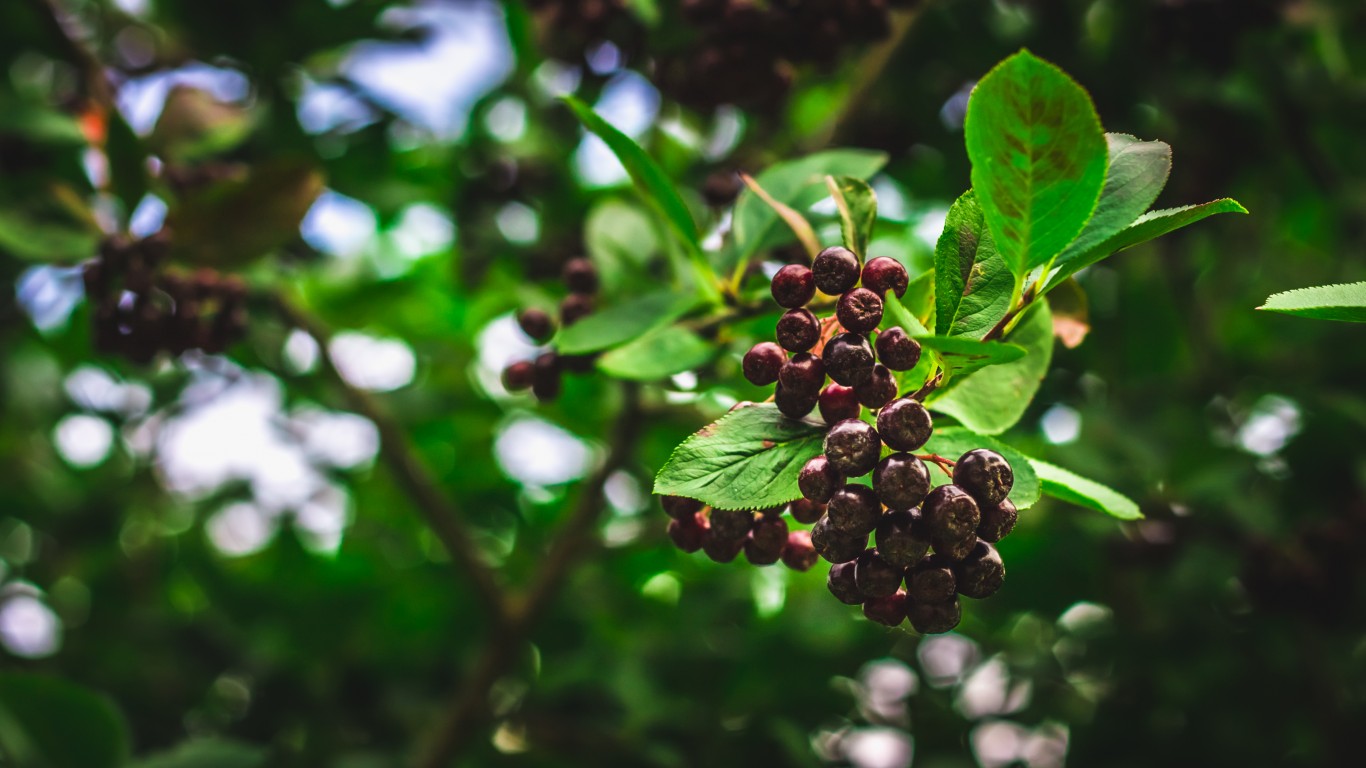
Elderberry leaves and seeds
> Principal danger: Cyanogenic glucosides
Touted for its medicinal purposes, the elderberry is packed with antioxidants and nutrients. However, the bark, leaves, seeds, and unripened berries of the plant contain cyanogenic glycosides, which can cause nausea, diarrhea, and overall weakness, among other problems.
[in-text-ad-2]
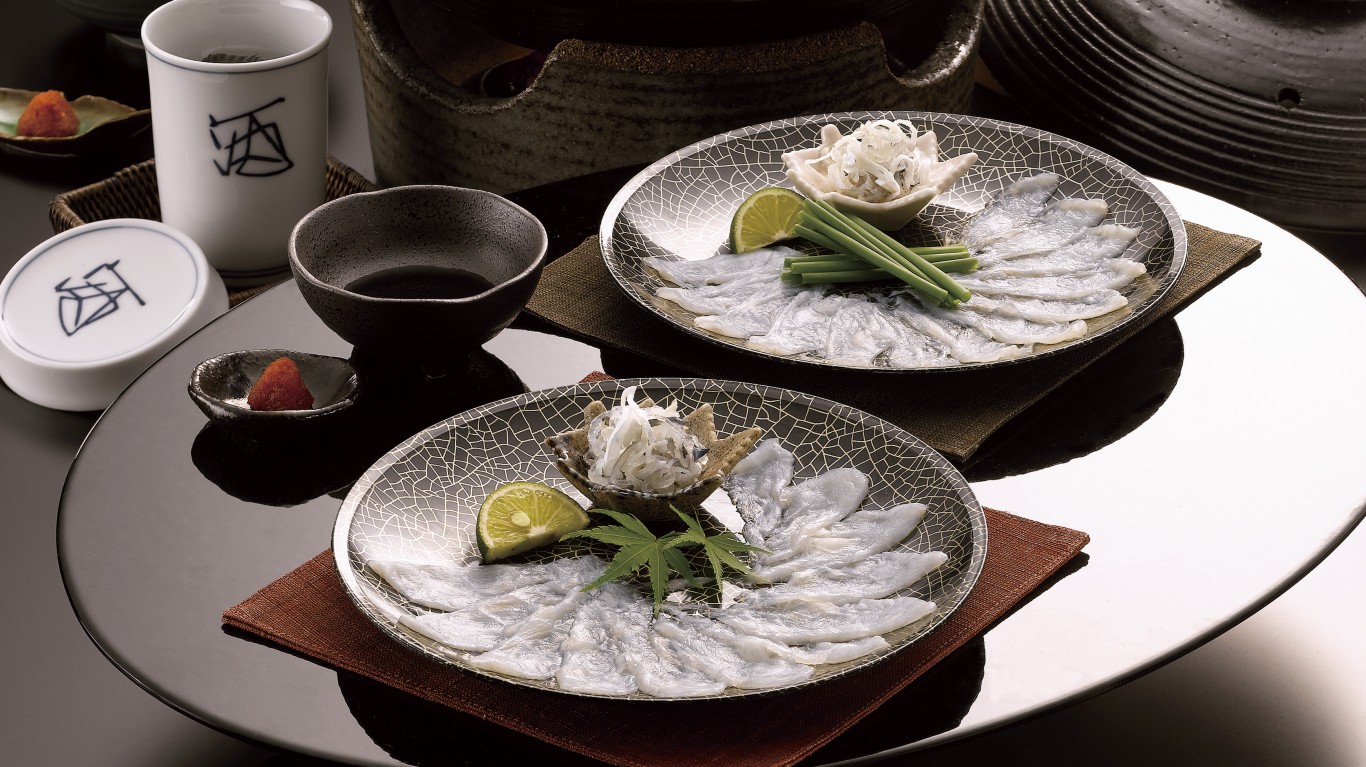
Fugu (blowfish)
> Principal danger: Tetrodotoxin
Fugu, or blowfish, contains the poison tetrodotoxin in its inner organs. The poison paralyzes the victim until he or she can no longer breathe, and death may follow. The flesh of the fish is considered a great delicacy, however, and it is often served in high-end sushi bars. In Japan and a few other countries, only chefs with three or more years of training are legally permitted to prepare the fish.
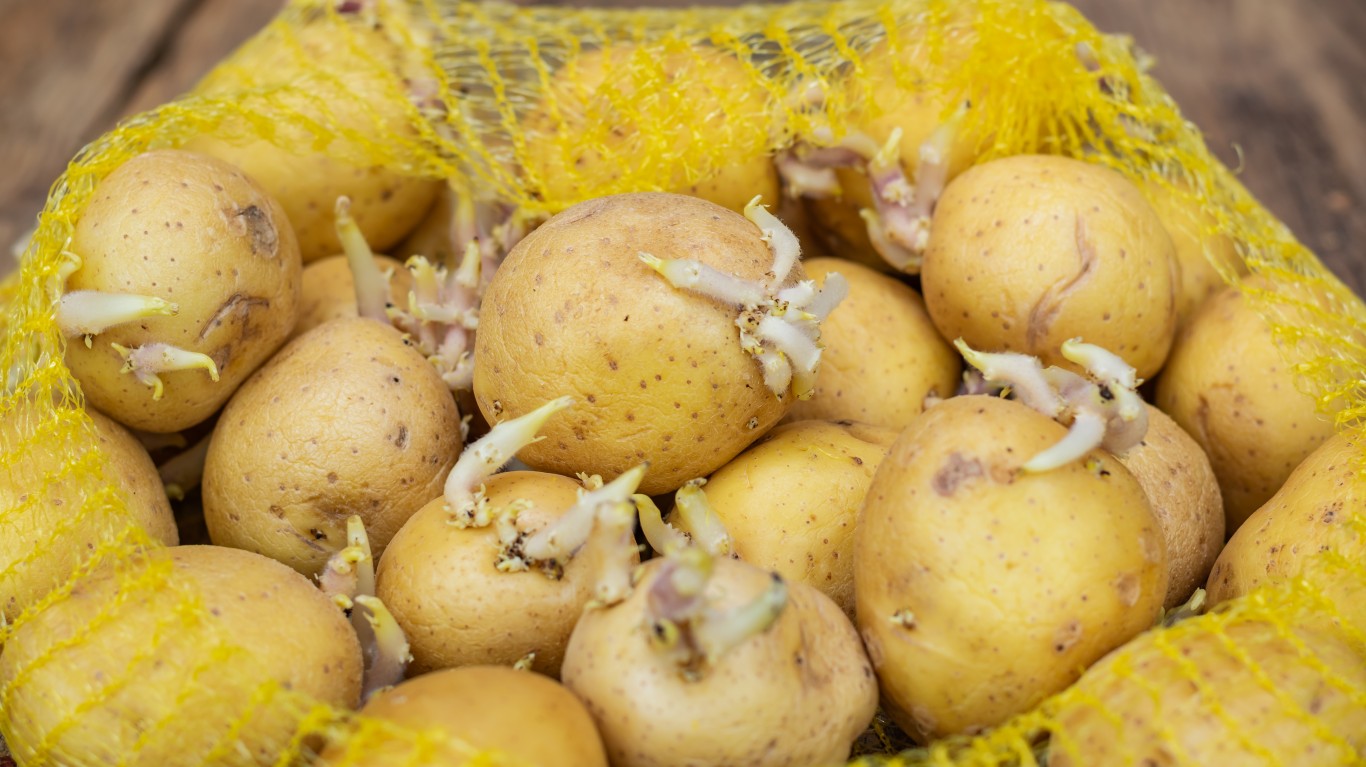
Green or sprouted potatoes
> Principal danger: Solanine, glycoalkaloids
As potatoes age, they develop a toxin called solanine, which turns them bitter and can lead to nausea and sometimes serious neurological problems. Other naturally occurring toxins in potatoes, called glycoalkaloids, grow strongest in the sprouts and eyes. Glycoalkaloids can be particularly problematic for infants and young children, but even in adults can cause acute gastrointestinal problems.
[in-text-ad]
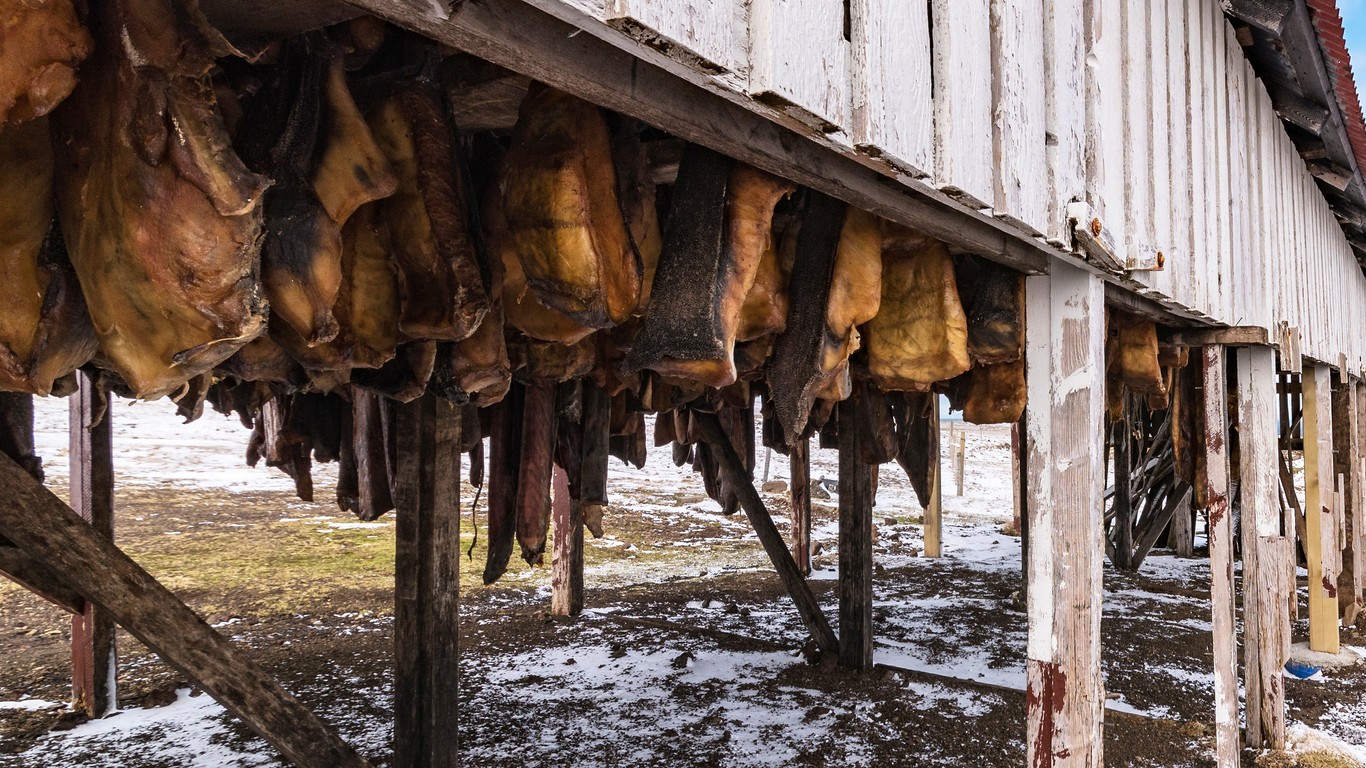
Hákarl (fermented shark meat)
> Principal danger: Urea, trimethylamine oxide
An Icelandic delicacy, hákarl is the meat of Greenland shark, traditionally prepared by burying it in sand to ferment for months, then air-drying it. The meat can be poisonous if eaten raw because the fish itself contains high quantities of urea and trimethylamine oxide (which can induce severe cardiovascular problems). Theoretically, the preparation process renders the shark harmless – but it acquires such a pungent ammoniated smell that non-Icelanders usually find it impossible to eat.

Hot dogs
> Principal danger: Choking hazard
Hot dogs are packed with sodium (up to 600 grams in one dog) and contain potentially carcinogenic additives – but they are arguably most dangerous, especially for children, because their size and texture makes them a potential choking hazard.
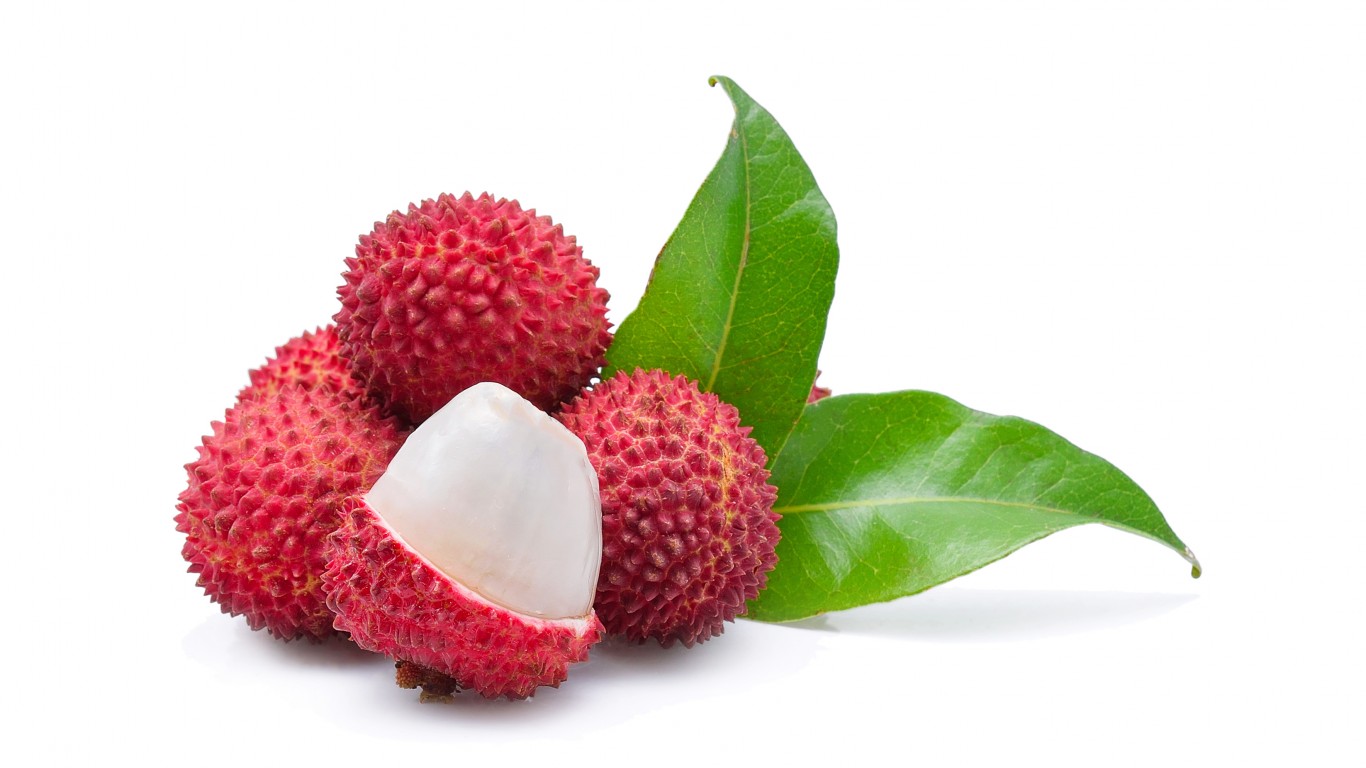
Lychees
> Principal danger: Hypoglycin A, methylene-cyclopropyl-glycine
Lychees are small tropical fruits found in Southeast Asia. Covered by a pinkish-colored skin, the lychee is peeled and its sweet, white flesh eaten. Consumed in small amounts, lychees are not harmful. However, the fruit has reportedly been the cause of brain inflammation cases in Southeast Asia. Scientists aren’t sure why that happens, but it may be due to the presence of the toxin hypoglycin A.
[in-text-ad-2]
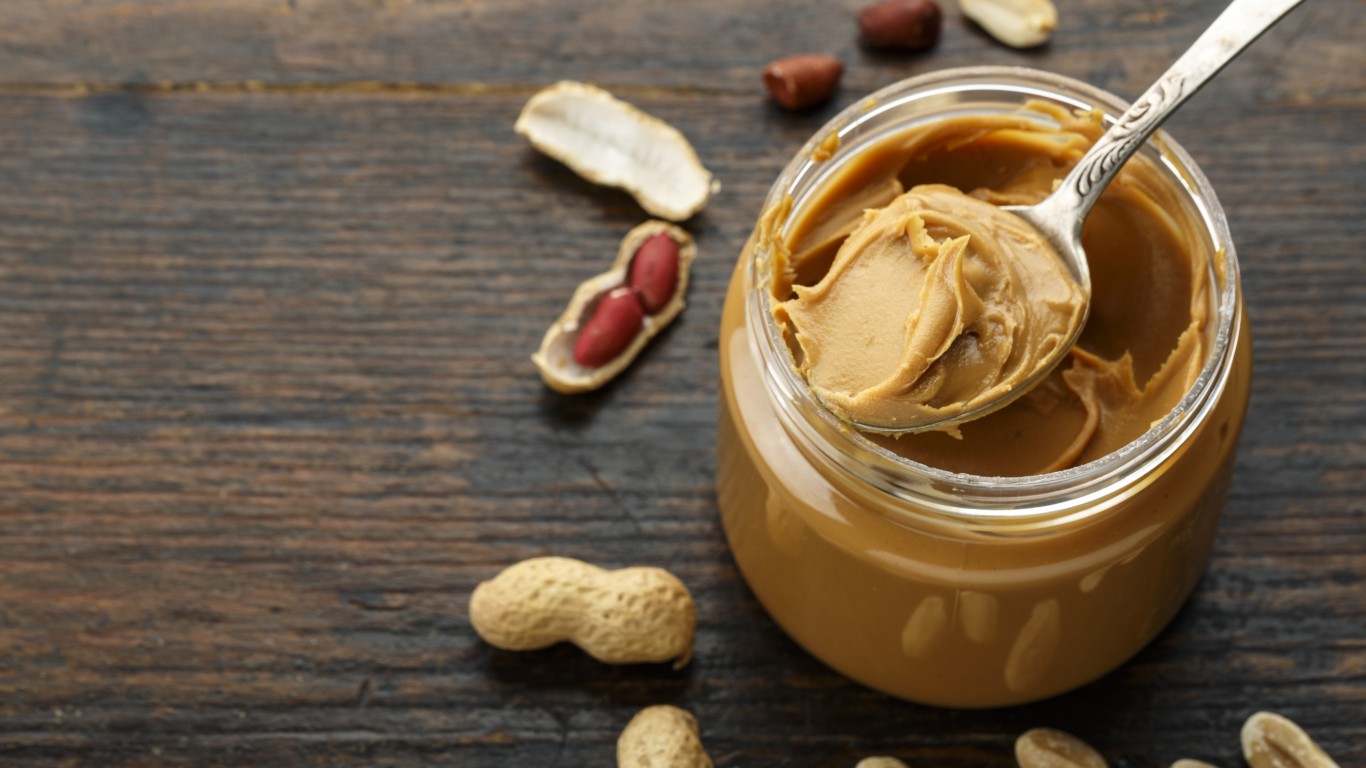
Peanut butter
> Principal danger: Choking hazard
The American Academy of Pediatrics lists peanut butter as one of the most dangerous choking hazards for children. Although every kid loves it, the thick, sticky substance can be hard for very young children to swallow. Even adults are sometimes advised not to eat spoonfuls straight from the jar for similar reasons.
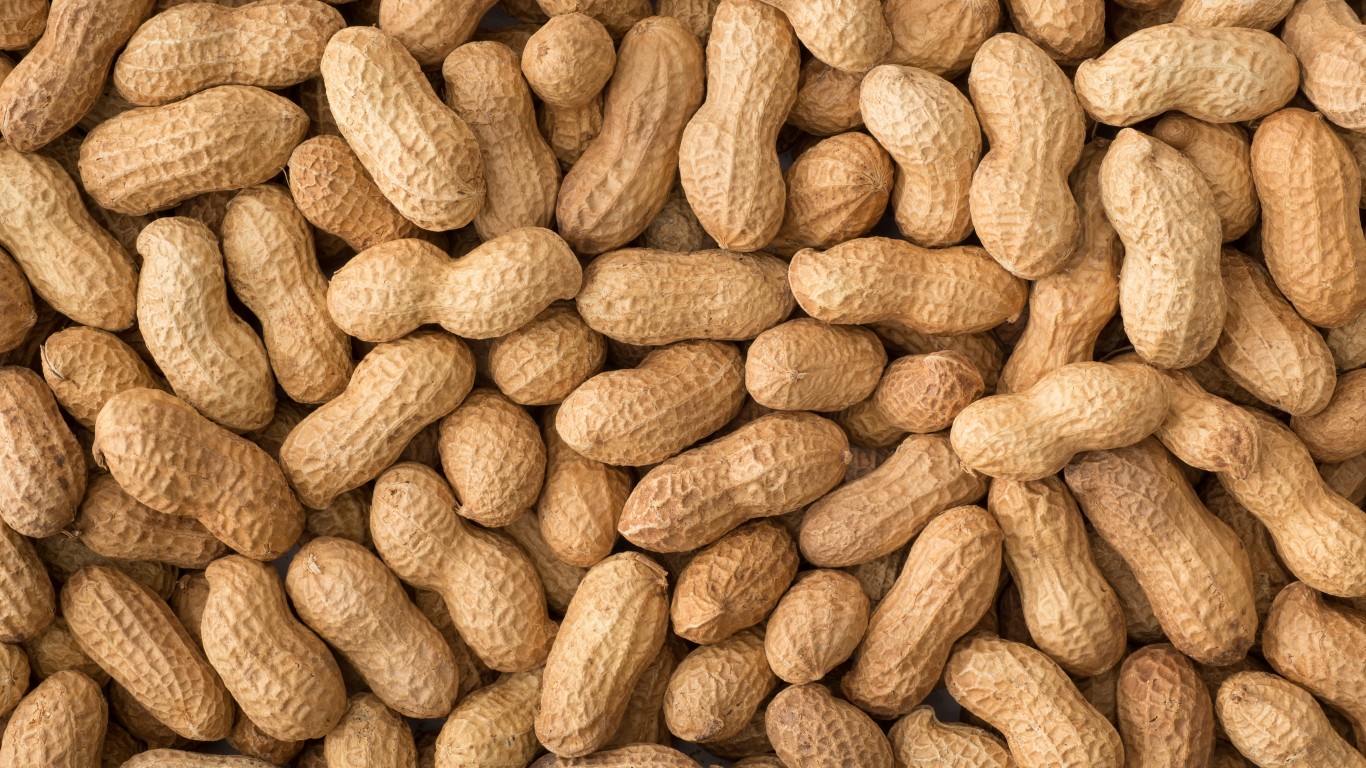
Peanuts
> Principal danger: Aflatoxins
Peanuts are healthy, right? Unfortunately, a type of fungus known as aspergillus can cause peanuts to develop aflatoxins, which are carcinogenic in themselves, but are also the trigger for extremely serious allergic reactions, especially in children, leading to death if not treated immediately. .
[in-text-ad]
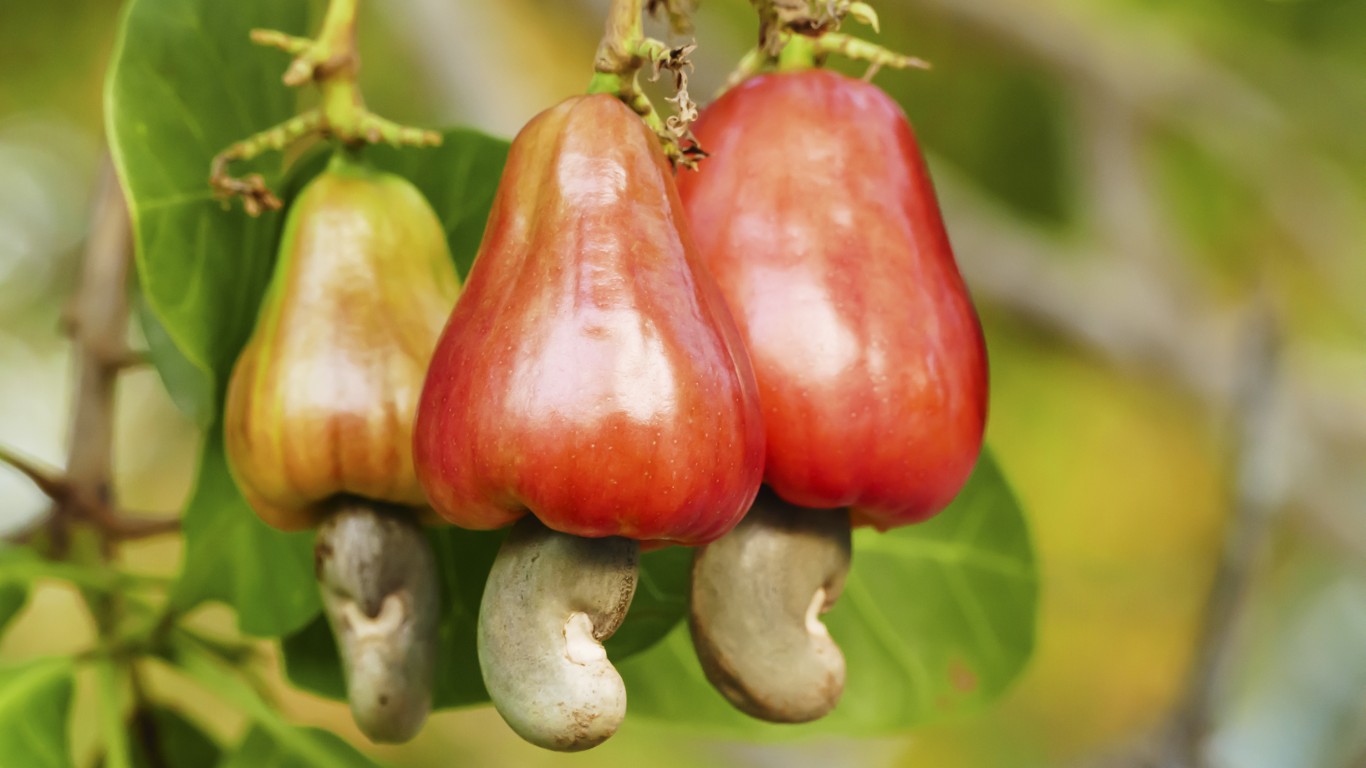
Raw cashews
> Principal danger: Urushiol
Raw cashews contain urushiol, a substance found in poison ivy. But if you see “raw” cashews in the store, they’re safe to eat because the nuts have been steamed to remove the toxins. A small percentage of people, however, have a severe allergic reaction to the nuts, similar to that more commonly linked to peanuts and just as potentially dangerous.
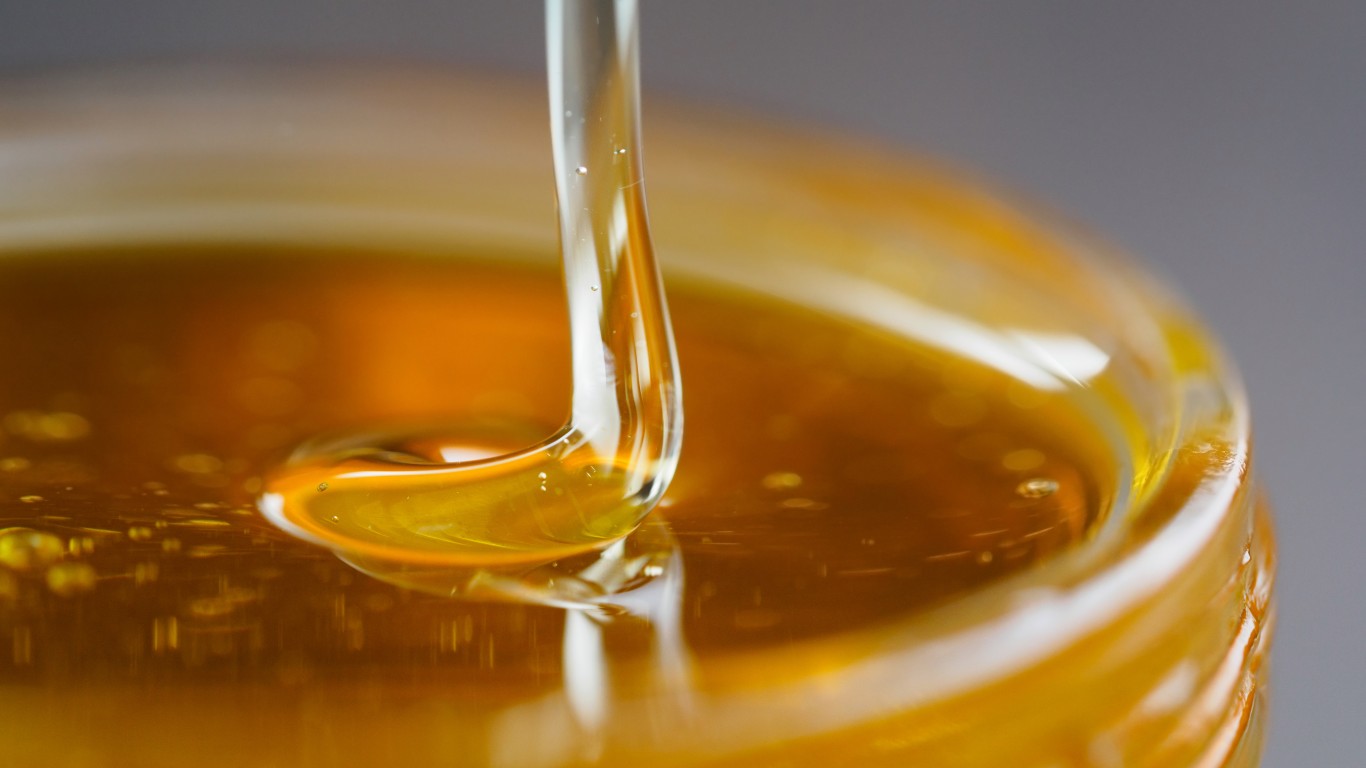
Raw honey
> Principal danger: Clostridium botulinum, pyrrolizidine alkaloids
Although safe for most adults, raw honey is especially dangerous to children under the age of one. The syrupy substance can contain spores of a bacterium that could cause botulism poisoning. Signs of an adverse reaction include nausea, vomiting, and diarrhea. Adults and older children can fight off the bacteria, but babies cannot. Compounds called pyrrolizidine alkaloids may cause symptoms of illness in some adults, as well, and a small segment of the population is allergic to bee pollen and may get sick from honey.
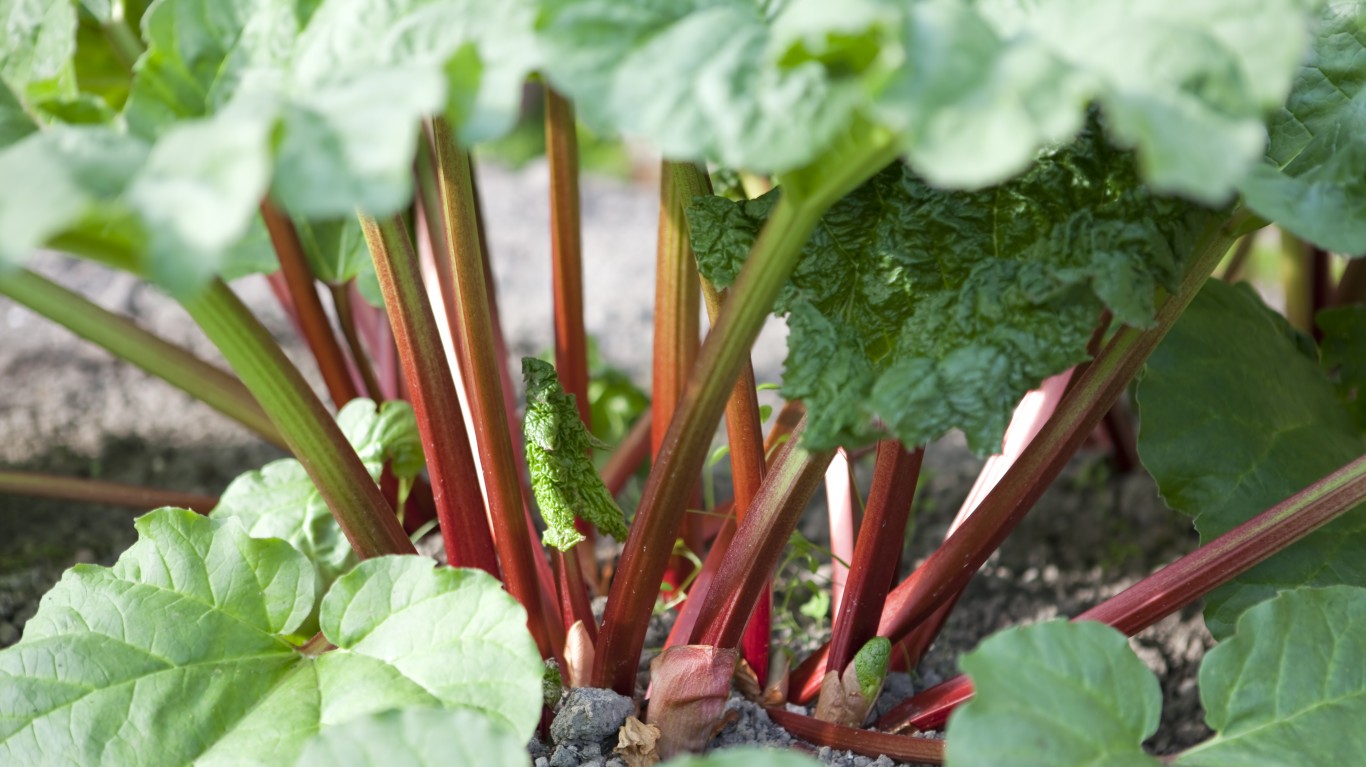
Rhubarb leaves
> Principal danger: Oxalic acid
Rhubarb stalks are perfectly safe to eat, and their tart flavor often finds its way into pies and tarts, with or without strawberries, in the spring. The leaves, however, are another story: They’re inedible because of a high concentration of oxalic acid, which can cause diarrhea and vomiting and lead to more serious conditions.
[in-text-ad-2]
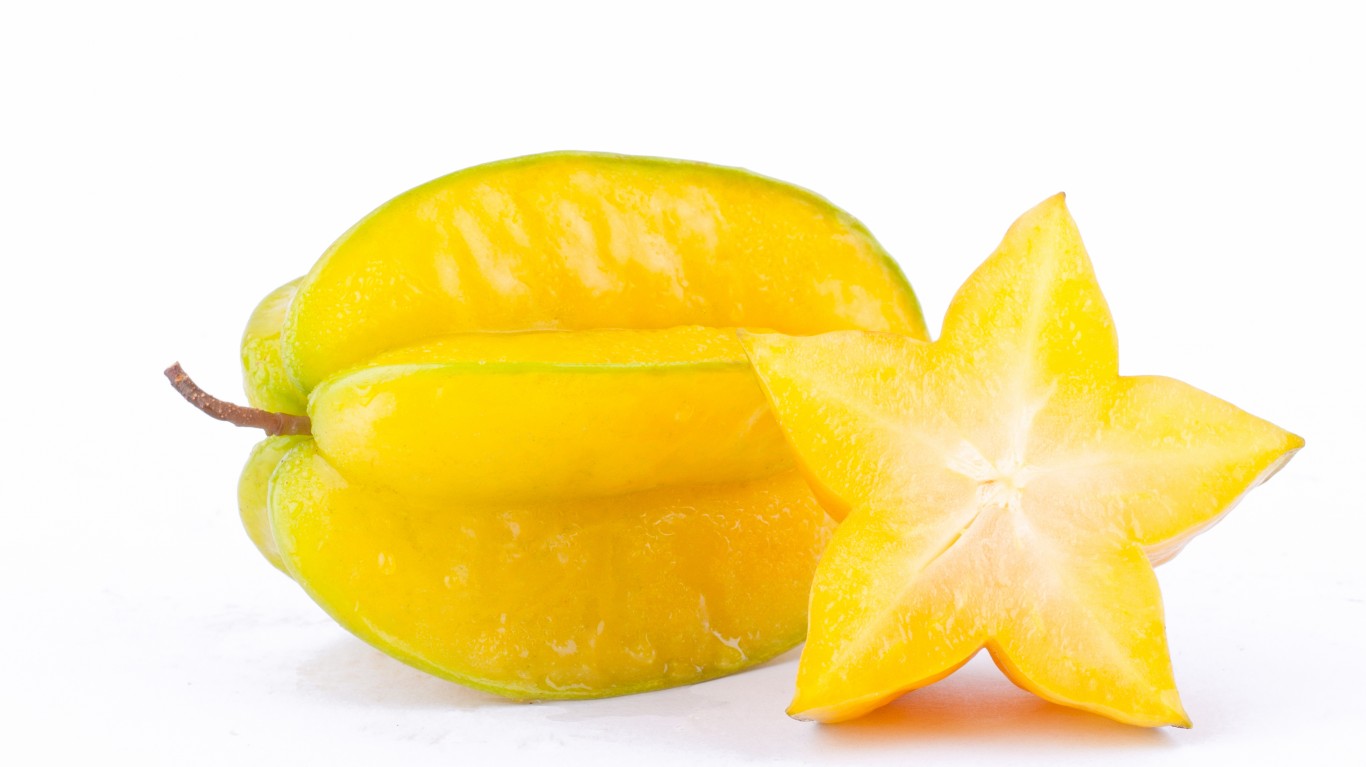
Starfruit
> Principal danger: Caramboxin
Shaped like a star, the starfruit, or carambola, contains a high concentration of oxalate. Most people can consume it safely, but it could cause further damage to those with kidney disease, and may interfere with the absorption of some prescription medicines.
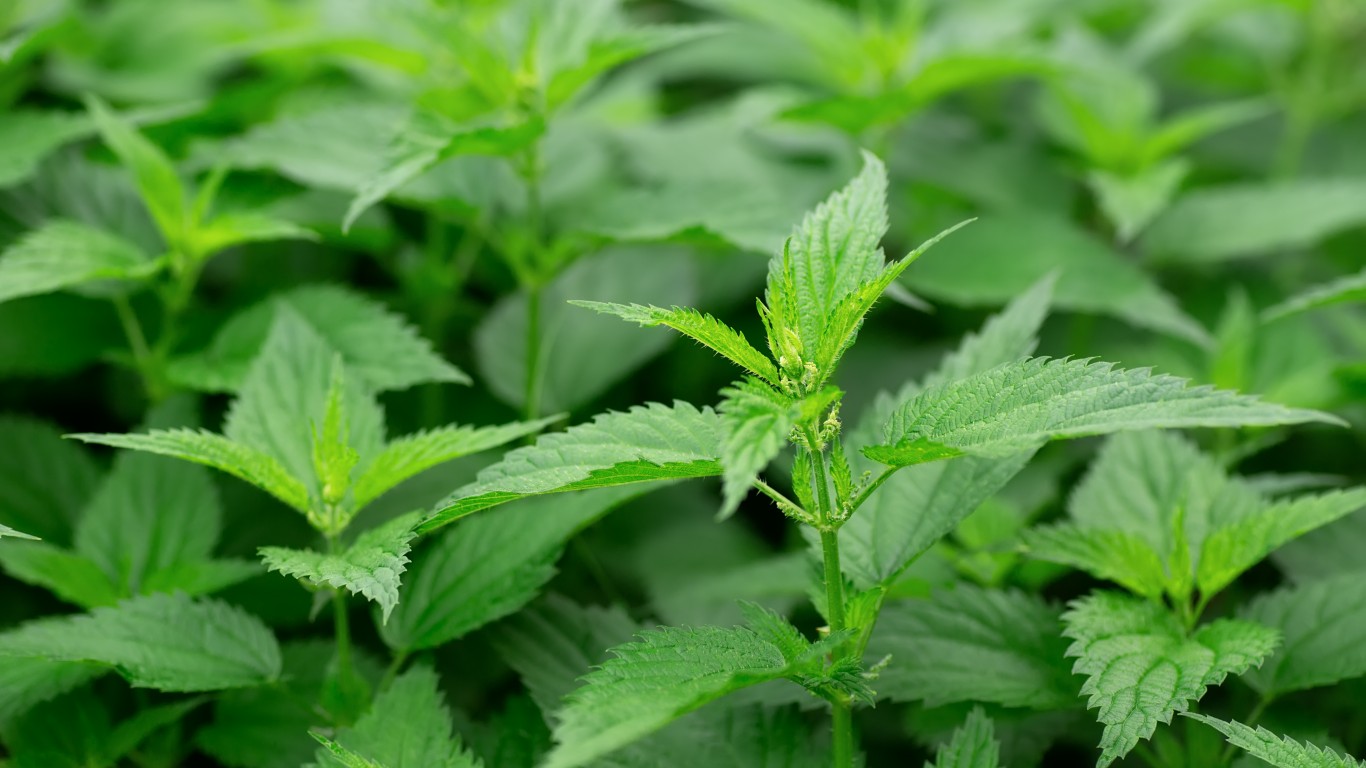
Stinging nettles
> Principal danger: Formic acid, sharp spines
When cooked or dried, stinging nettles – popularly considered a springtime health food in some cultures – are generally considered safe. However, the leaves can cause an allergic reaction on the skin due to their content of formic acid and other substances, and the spines can cut the hands.
[in-text-ad]
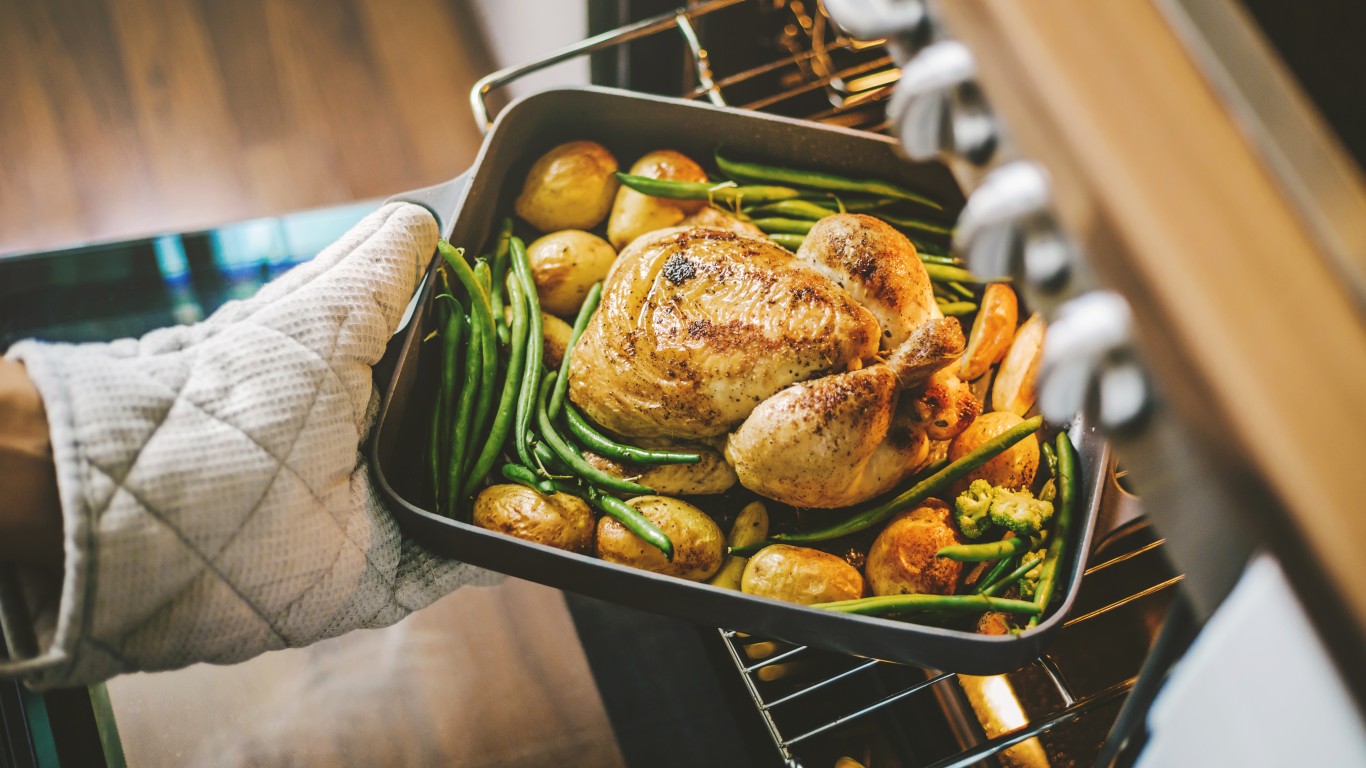
Undercooked chicken
> Principal danger: Bacteria including campylobacter and salmonella
The Centers for Disease Control & Prevention estimates that about a million people get sick from eating contaminated poultry every year. Undercooked chicken may contain harmful bacteria, such as salmonella, which can be fatal. To prevent contamination or illness, cook chicken to an internal temperature of 165° F, wash your hands after preparing the meat, and clean any poultry juices from your utensils, plate, or cutting board.
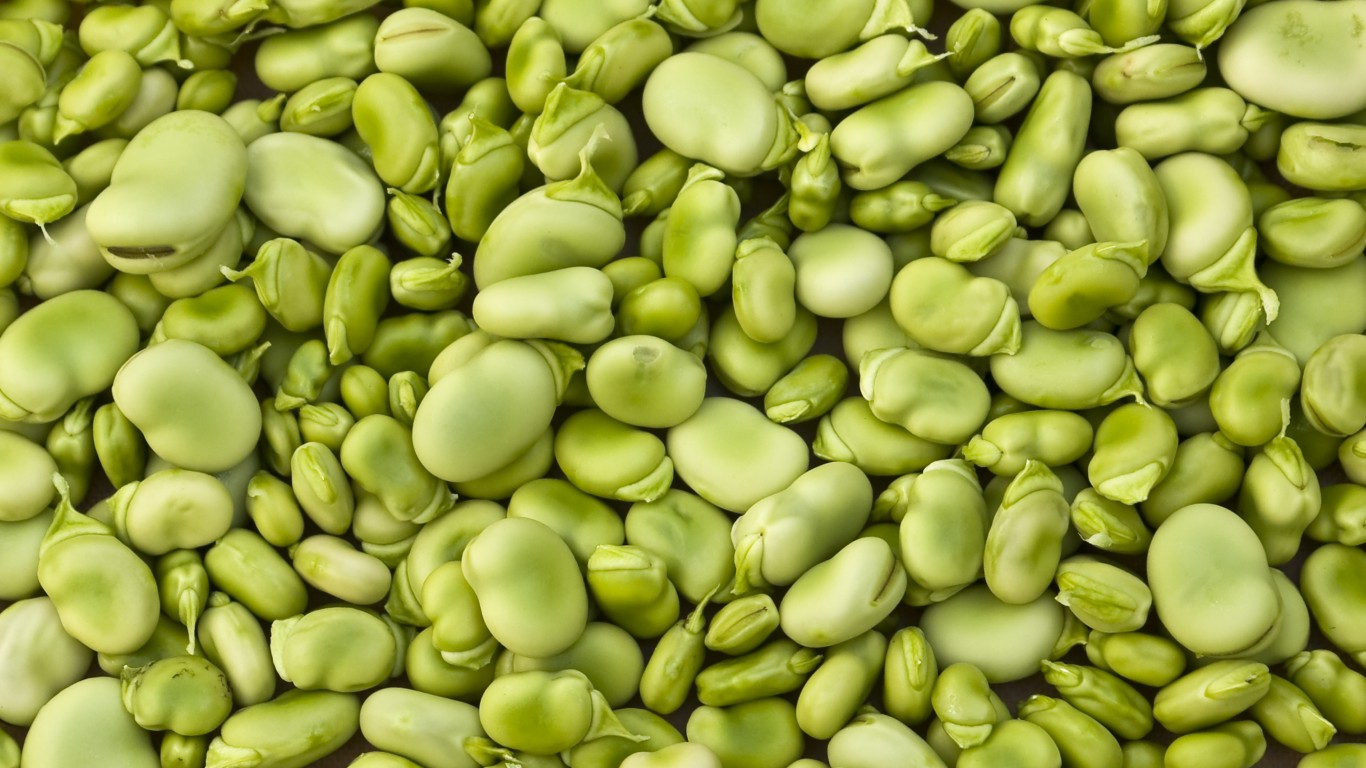
Undercooked lima beans
> Principal danger: Limarin
Raw lima beans contain linamarin, which turns into cyanide when eaten. But when well-cooked lima beans pose no danger because the heat destroys the cyanide enzymes.
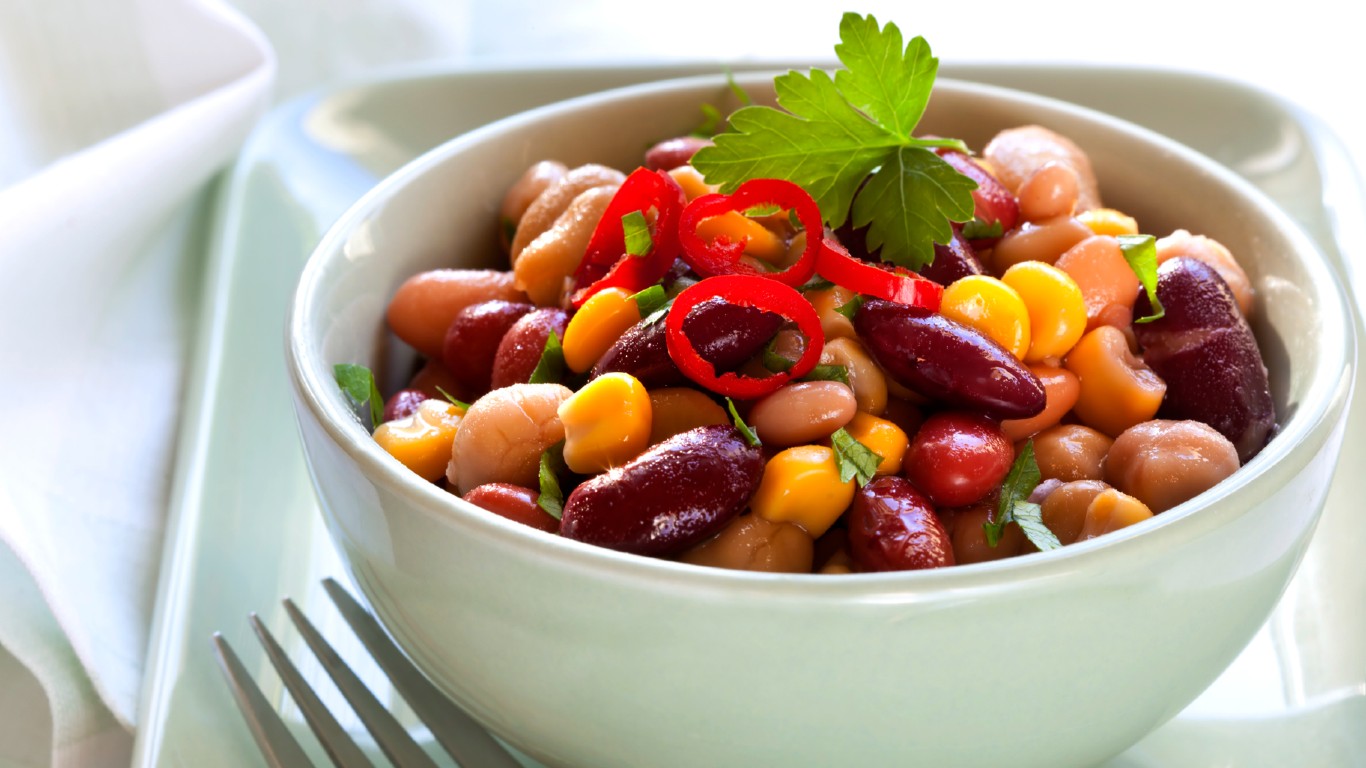
Undercooked red kidney beans
> Principal danger: Phytohaemagglutinin
Phytohaemagglutinin is found in many raw beans, but its highest concentration comes in kidney beans. A good soak and thorough cooking will remove the toxin and prevent any gastrointestinal symptoms.
[in-text-ad-2]
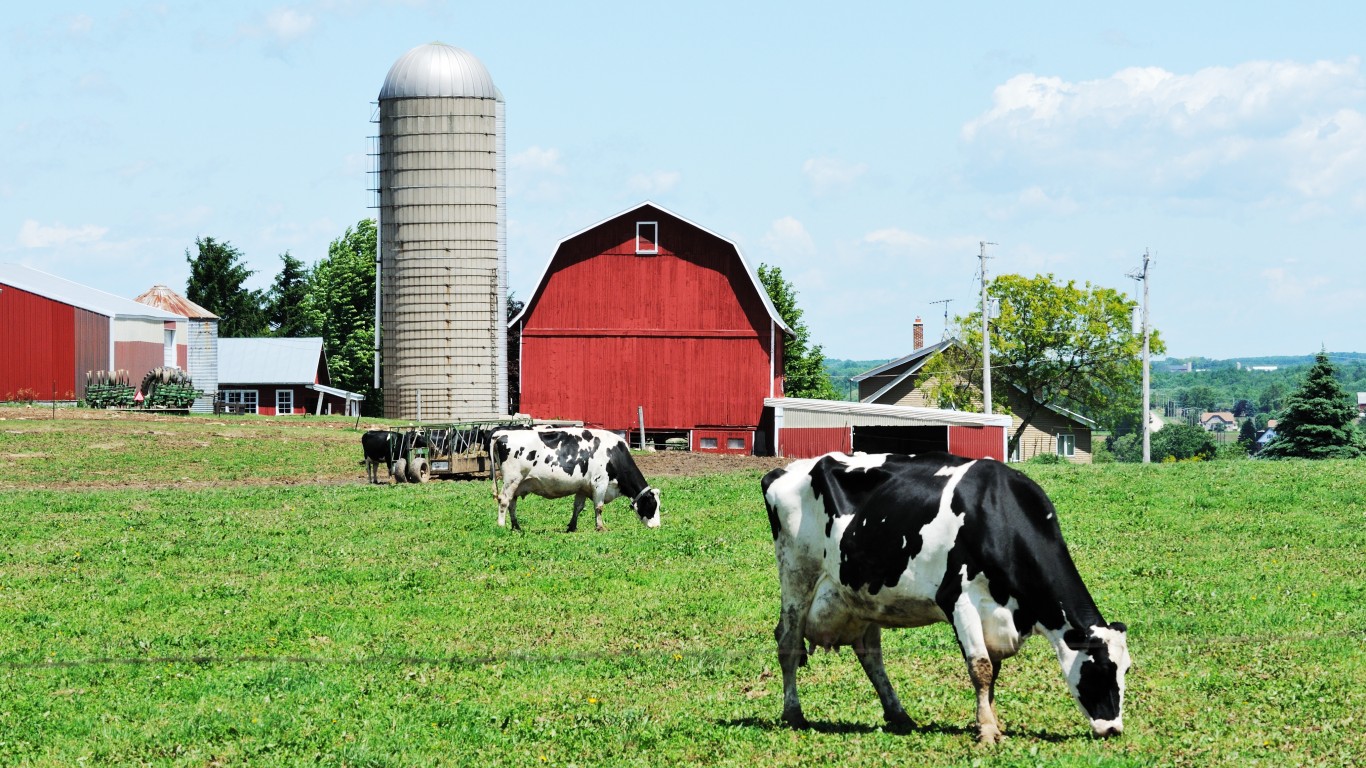
Unpasteurized dairy products
> Principal danger: Listeria, salmonella, E. coli
Whether from a cow, sheep, or goat, unpasteurized milk and other dairy products may be full of Listeria monocytogenes and other bacteria that can cause food poisoning. The heating process called pasteurization – after French chemist and microbiologist Louis Pasteur, who invented it in 1864 – kills the bacteria, making the treated milk safe.
Are You Ahead, or Behind on Retirement? (sponsor)
If you’re one of the over 4 Million Americans set to retire this year, you may want to pay attention.
Finding a financial advisor who puts your interest first can be the difference between a rich retirement and barely getting by, and today it’s easier than ever. SmartAsset’s free tool matches you with up to three fiduciary financial advisors that serve your area in minutes. Each advisor has been carefully vetted, and must act in your best interests. Start your search now.
Don’t waste another minute; get started right here and help your retirement dreams become a retirement reality.
Thank you for reading! Have some feedback for us?
Contact the 24/7 Wall St. editorial team.
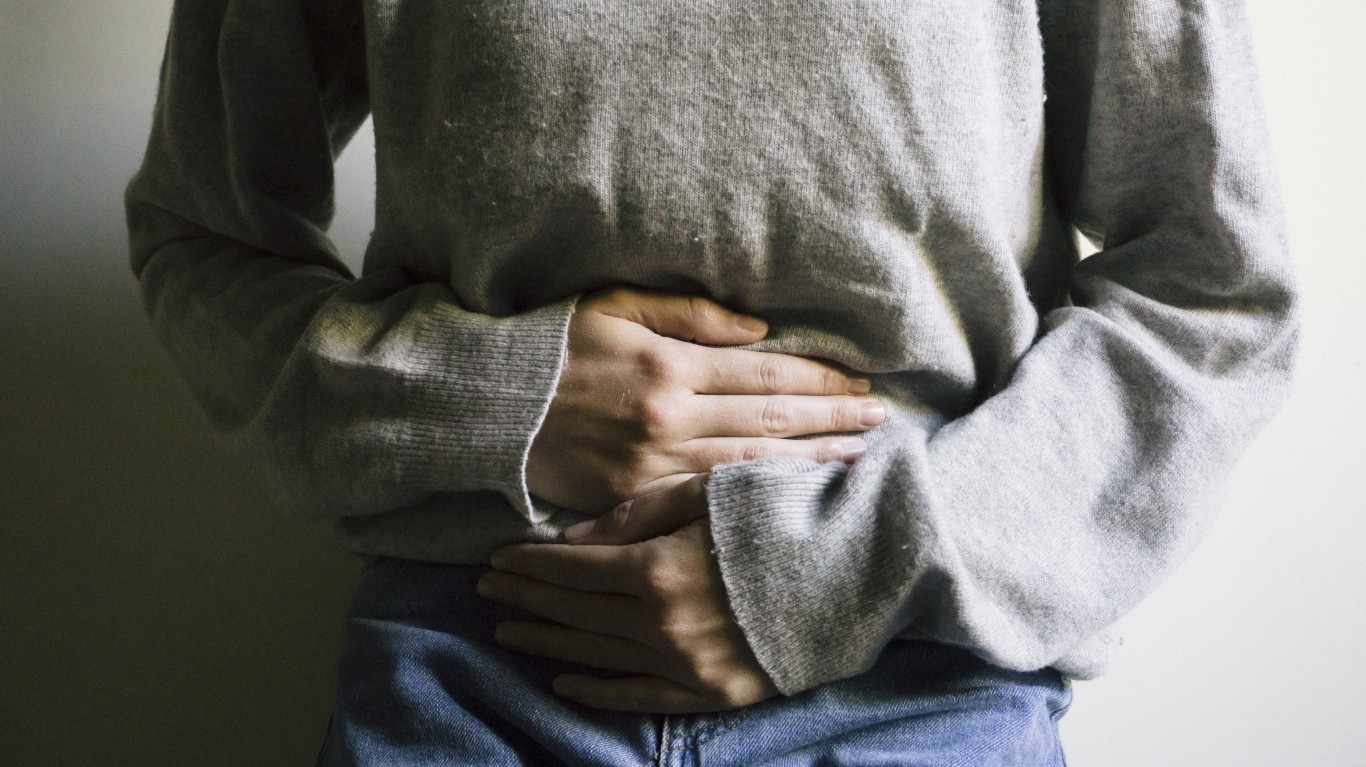 24/7 Wall St.
24/7 Wall St.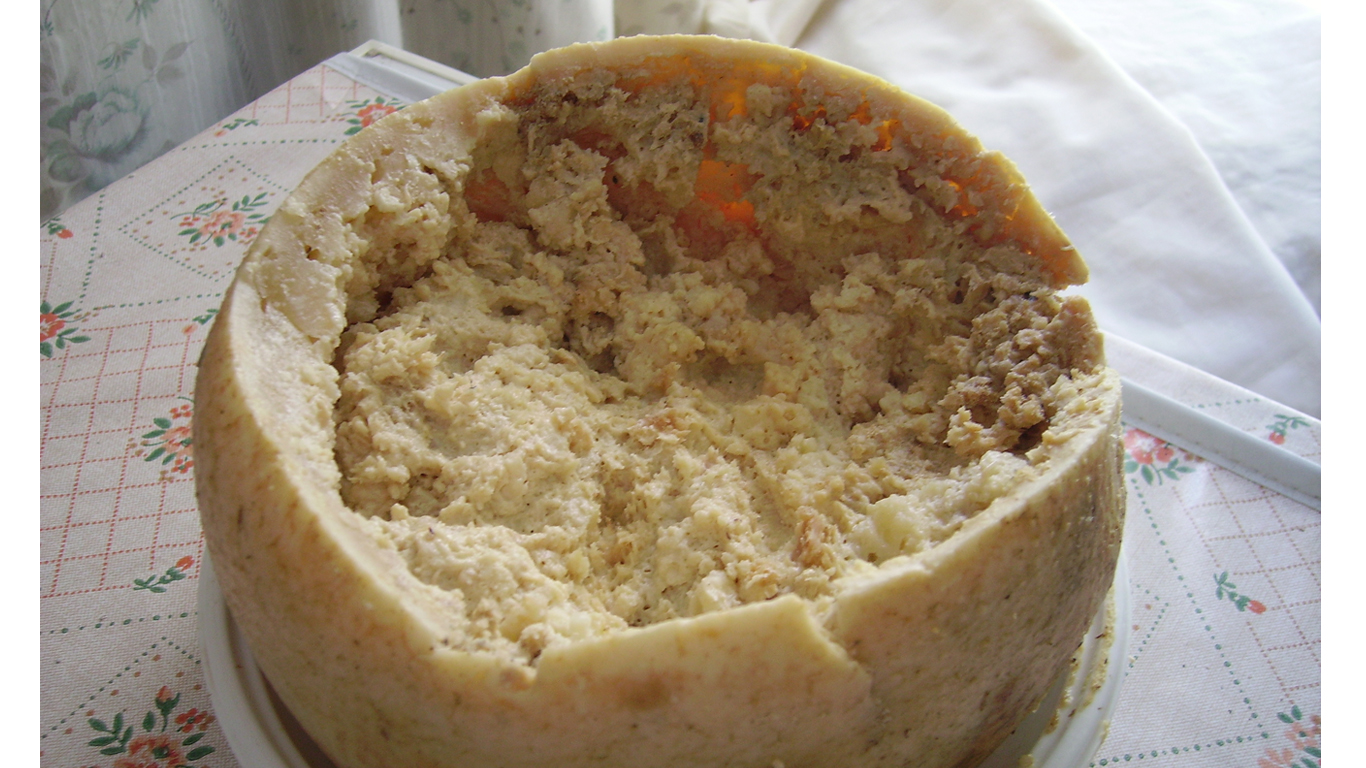
 24/7 Wall St.
24/7 Wall St.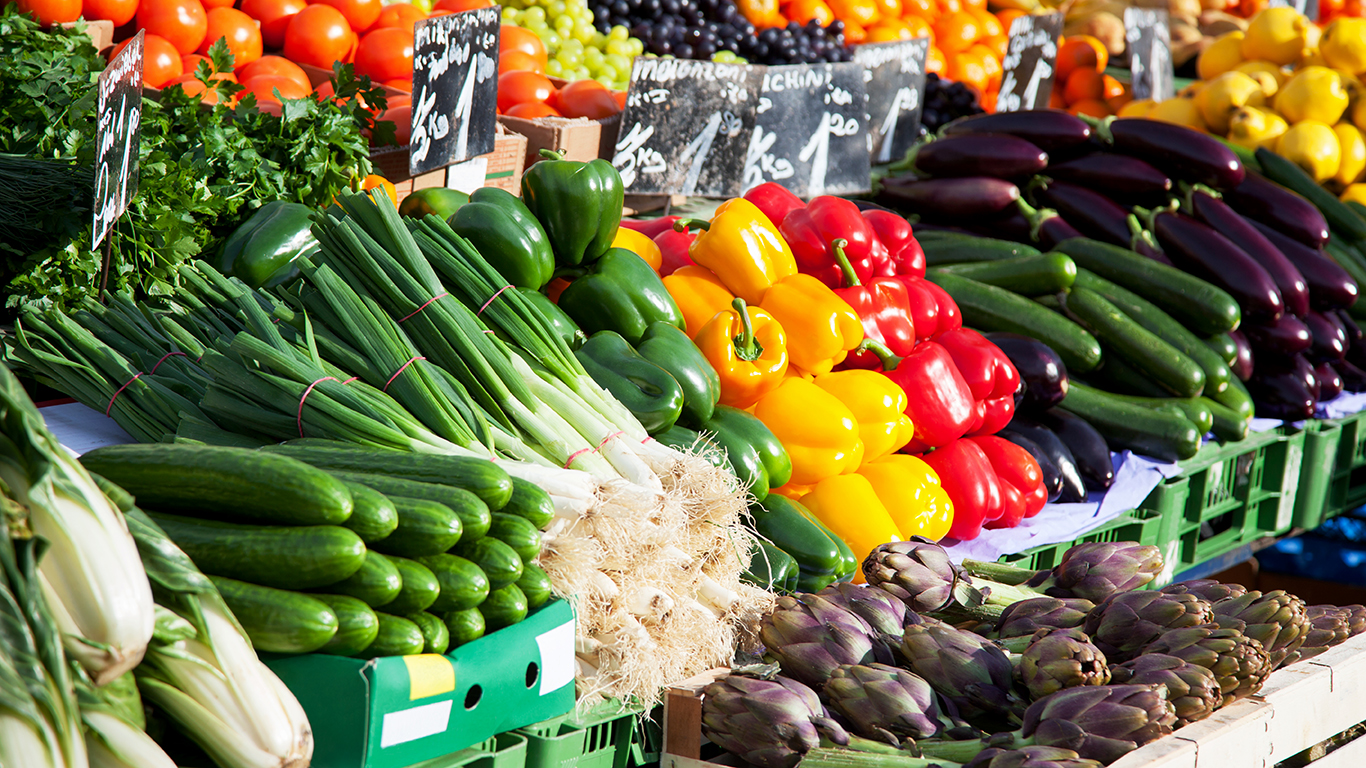 24/7 Wall St.
24/7 Wall St.

